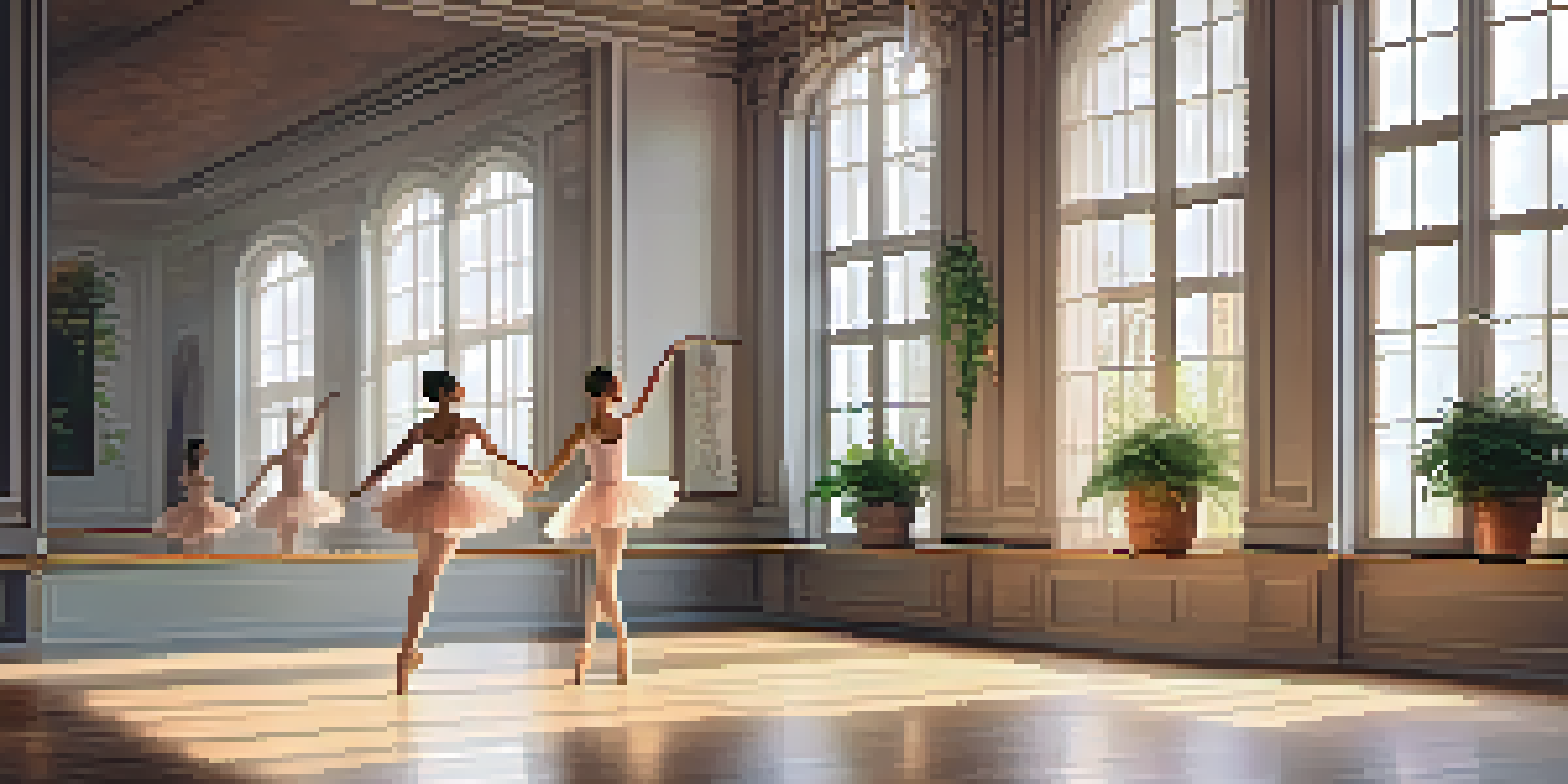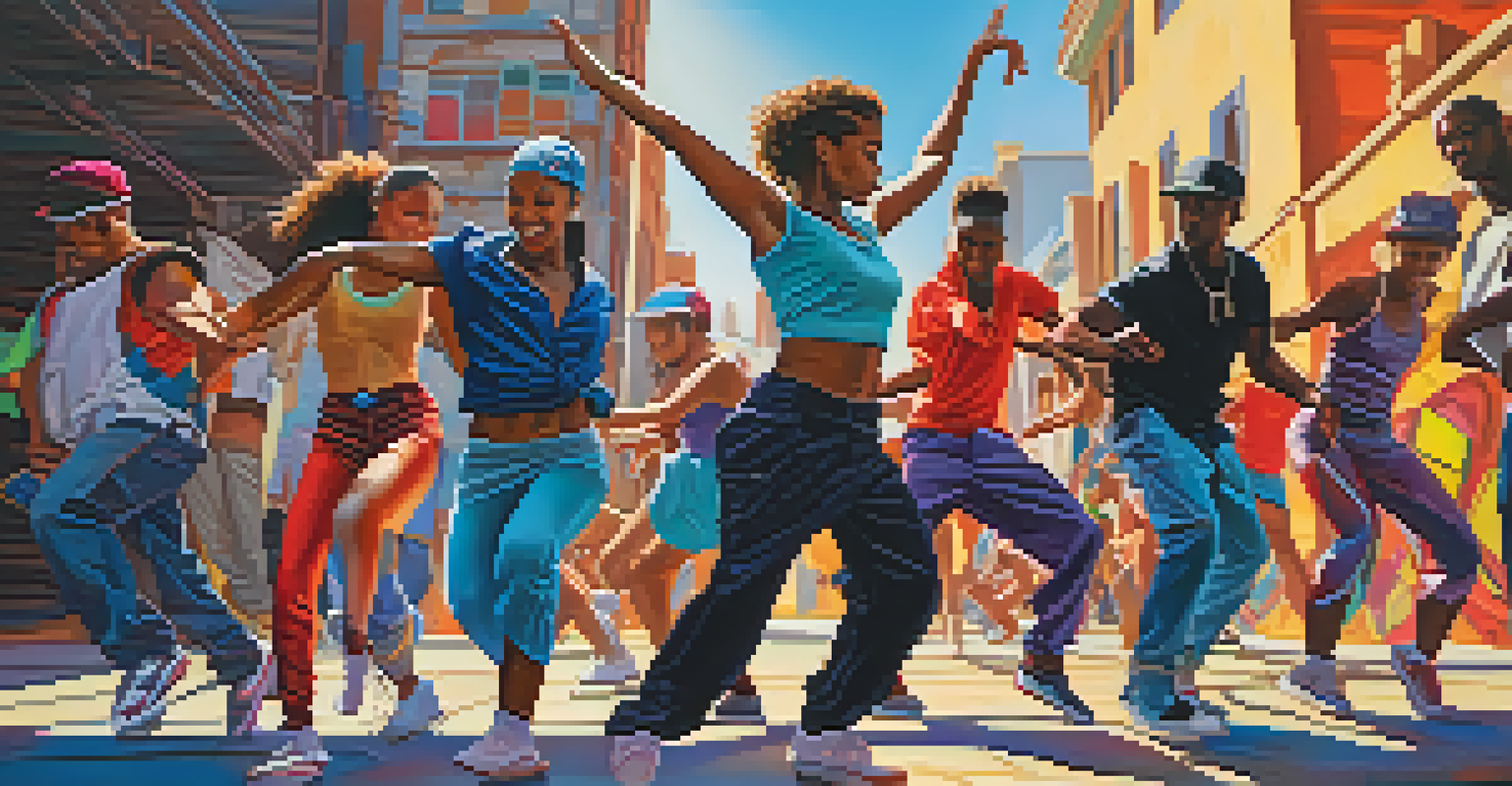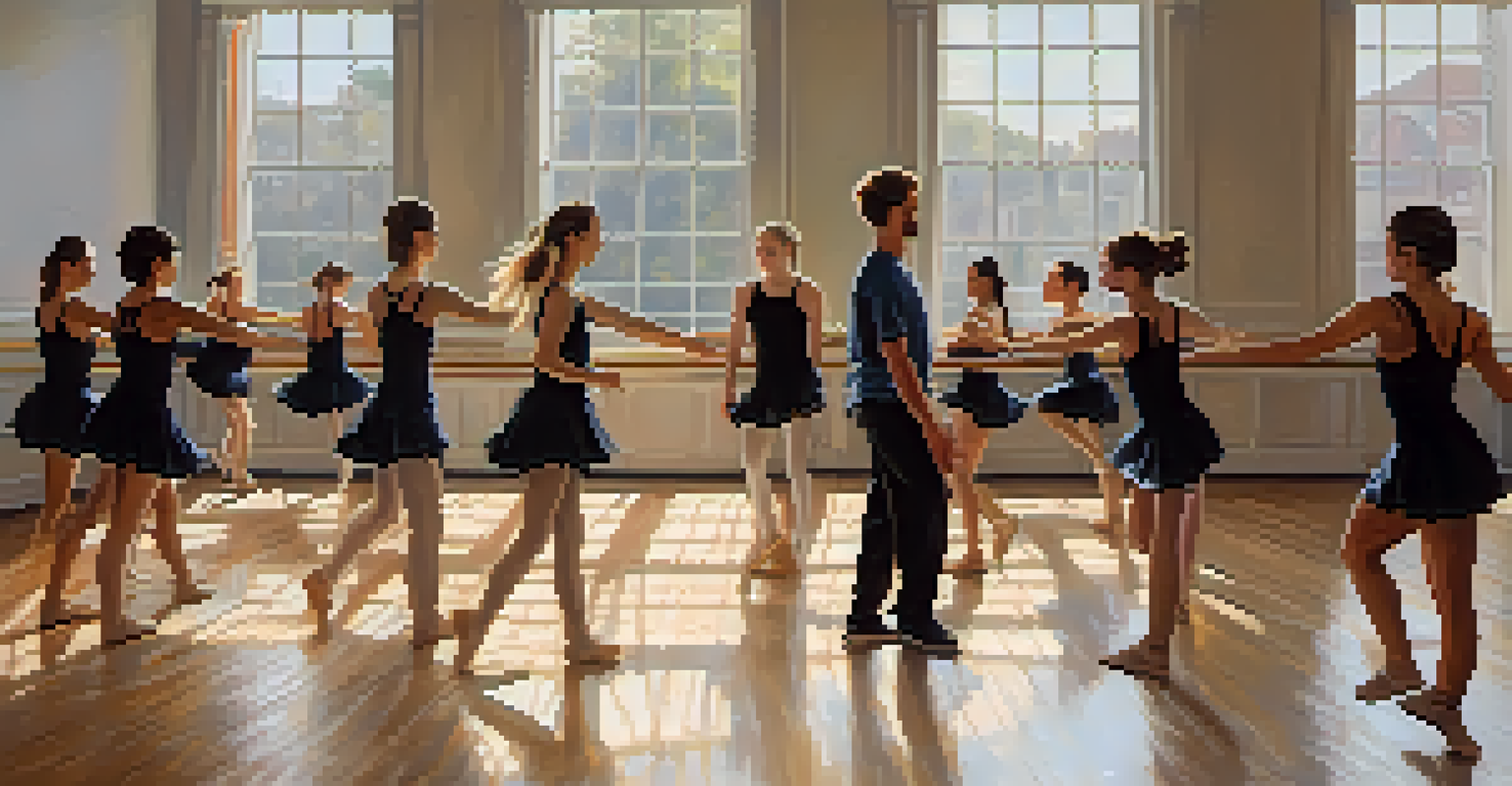The Impact of Dance Training on Choreographic Development

Understanding Dance Training and Its Basics
Dance training encompasses various styles, techniques, and practices that help dancers develop their skills. From ballet to hip-hop, each genre offers unique methods that contribute to a dancer's growth. This foundation is crucial for aspiring choreographers, as it provides them with the tools needed to create and innovate.
Dance is the hidden language of the soul.
Through consistent practice, dancers learn body mechanics, rhythm, and spatial awareness, which are essential for choreography. As they delve into different styles, they also gain a broader perspective on movement and expression. This versatility allows them to draw inspiration from multiple sources when choreographing their own pieces.
Ultimately, understanding the basics of dance training lays the groundwork for effective choreography. The more diverse a dancer's training, the richer their choreographic ideas will be, setting the stage for creative exploration and artistic growth.
The Role of Technique in Choreographic Development
Technique is the backbone of dance, providing the physical skills necessary for fluidity and expression. Strong technical training allows dancers to execute movements with precision, which is vital when it comes to choreographing complex sequences. This mastery of technique serves as a springboard for creativity, enabling choreographers to push boundaries and experiment.

When dancers are well-versed in technique, they can more easily manipulate movements to suit their artistic vision. For instance, a choreographer familiar with contemporary dance techniques can incorporate elements from ballet or jazz to create a unique fusion. This blend of styles not only enriches the choreography but also keeps it fresh and engaging.
Dance Training Fuels Choreography
Diverse dance training provides essential skills and inspiration for creating innovative choreography.
In essence, the technical proficiency gained through rigorous dance training empowers choreographers to explore new ideas and innovate. This ability to merge different techniques can lead to the creation of captivating and memorable performances.
Creativity Flourishes Through Dance Experience
Dance training doesn't just focus on physical skills; it also nurtures creativity. As dancers engage with various styles, they are encouraged to express themselves and think outside the box. This creative exploration is vital for choreographers, as it allows them to develop a unique voice in their work.
To be a dancer is to be a creator; to be a creator is to be a dancer.
Participating in workshops, collaborating with other dancers, and experimenting with improvisation all contribute to a choreographer's creative growth. Each experience offers new insights and perspectives, which can inspire fresh ideas for choreography. It's like adding colors to a palette—each new experience enhances the final masterpiece.
Thus, the interplay between dance training and creativity is significant. A choreographer who embraces diverse experiences is more likely to produce innovative works that resonate with audiences.
Collaboration: A Key Element in Choreographic Growth
Collaboration is a cornerstone of dance training and an essential part of choreographic development. Working with other dancers allows choreographers to gain different perspectives and ideas, which can enhance their own creative process. This collective energy often leads to dynamic and innovative choreography that might not have emerged in isolation.
For example, when dancers come together for a group project, they share their unique experiences and styles, creating a melting pot of ideas. This synergy can spark inspiration and lead to the development of new movement phrases or themes. Collaborating also helps dancers build essential communication skills, which are crucial when conveying their vision to a group.
Collaboration Enhances Creativity
Working with other dancers fosters new ideas and perspectives, enriching the choreographic process.
In summary, collaboration in dance training fosters a supportive environment where creativity can thrive. Choreographers who engage with others often find their work enriched and their artistic horizons expanded.
The Impact of Performance Experience on Choreography
Performance experience plays a significant role in shaping a choreographer's work. When dancers take the stage, they learn how to connect with an audience, which is a vital skill for any choreographer. Understanding audience reactions can help choreographers refine their pieces and make informed artistic choices.
Additionally, performing allows dancers to experiment with their choreography in real-time, gaining valuable feedback. They can observe what resonates with the audience and what falls flat, leading to adjustments and improvements. This cycle of creation, performance, and reflection ultimately enhances the quality of their work.
Therefore, performance experience is more than just showcasing talent; it is a learning opportunity that informs future choreography. Engaging with an audience adds depth and context to a choreographer's artistic journey.
The Influence of Cultural Context on Choreography
Cultural context significantly impacts choreography, providing a rich tapestry of influences that choreographers can draw from. Dance training often exposes dancers to various cultural styles, allowing them to incorporate these elements into their choreographic work. This fusion not only enriches the choreography but also broadens its appeal.
For instance, a choreographer who has trained in traditional African dance may integrate those movements into contemporary pieces, creating a unique narrative. This blending of cultures can foster deeper connections with diverse audiences, as it reflects shared experiences and stories. Such cultural sensitivity in choreography is essential in today's globalized world.
Performance Experience Shapes Work
Engaging with audiences during performances offers valuable feedback that informs and refines choreography.
In conclusion, cultural context shapes choreographic development by encouraging exploration and appreciation of different traditions. Dancers who embrace these influences can create meaningful and resonant works that celebrate diversity.
The Lifelong Journey of Dance Training and Choreography
Dance training is not just a phase; it’s a lifelong journey that evolves over time. As dancers continue to learn and grow, so too does their choreography. This ongoing education is essential for keeping creativity alive and adapting to new trends and techniques in the dance world.
Choreographers often find that the more they learn, the more their work evolves. They may revisit previously created pieces and infuse them with new insights gained from their training. This cycle of learning and revisiting keeps their choreography fresh and relevant, allowing them to push artistic boundaries.

Ultimately, embracing the idea of lifelong learning in dance training leads to continuous growth as a choreographer. It fosters a mindset that values curiosity and adaptability, essential traits for anyone in the ever-evolving world of dance.